JUNE 15 marks the twentieth anniversary of the 1996 Manchester bombing by the Provisional Irish Republican Army.
While no one was killed in the bombing, which destroyed parts of the city, over 200 people were injured when the explosion took place next to the Arndale centre in Manchester.
Here are 10 things to know about the bomb that ripped through Manchester and the effect the explosion had on the city.
1.The bomb was left by two men in a truck parked on Corporation Street, Manchester City Centre
At 9.20am on the morning of the explosion, CCTV footage showed a red and white Ford Cargo truck pull up on Corporation Street, next to Manchester Arndale, a big shopping centre at the heart of Manchester's retail district. Two men left the truck on double yellow lines next to Marks and Spencer before walking away. Three minutes later, a traffic warden issued a parking ticket on the truck and called for its removal.
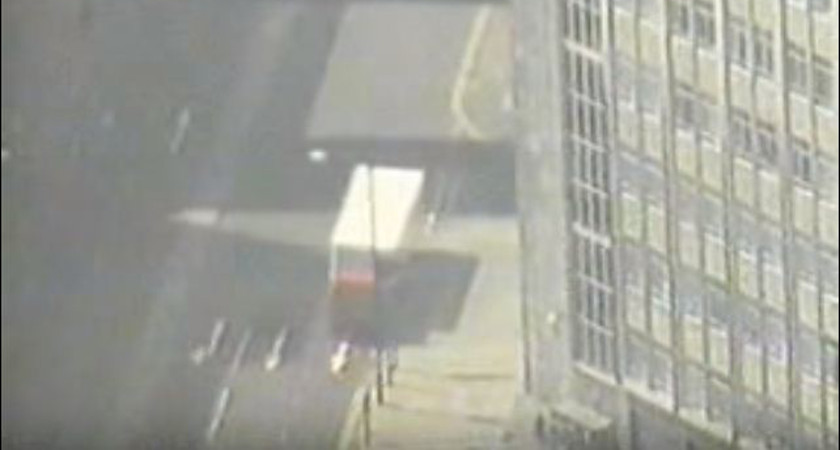 The truck carrying the explosive, captured by a Greater Manchester Police helicopter
The truck carrying the explosive, captured by a Greater Manchester Police helicopter2. The police knew the bomb was there for over an hour before it exploded
At 9.43am, a man with an Irish accent phoned the switchboard at Granada TV studios in Manchester. The security guard who took the call was told a bomb on the corner of Corporation St and Cannon St would explode in one hour. The caller gave a recognised codeword so that police would know the call was genuine. Police and security guards began the mammoth task of clearing the city of 80,000 shoppers, eventually establishing a cordon of about a quarter of a mile from the truck.
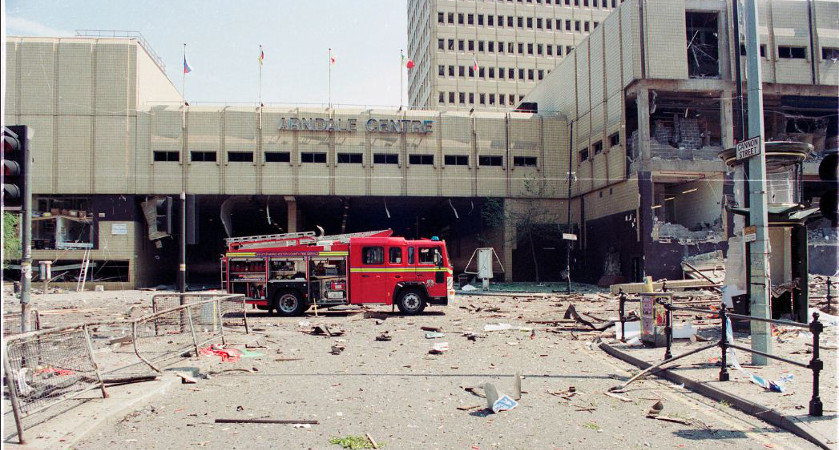 The Arndale Centre was packed with shoppers on a busy Saturday morning (Manchester Fire Service/Flickr)
The Arndale Centre was packed with shoppers on a busy Saturday morning (Manchester Fire Service/Flickr)3. The Manchester bombing was the largest peacetime bomb ever detonated in Great Britain
Despite the Army bomb disposal team being deployed from its base in Liverpool, the team were too late to defuse the bomb before it detonated. Attempts to disarm the bomb using a robot device failed and it exploded at 11.17am. The 3,300lb device, containing a mixture of semtex and ammonium nitrate fertiliser, was the largest bomb to have been detonated in Britain since the Second World War. Footage of the explosion was captured by a police helicopter.
4. Mannequins from shop windows were mistaken for bodies
The emergency services leapt into action to seek out the casualties after glass and masonry rained down on the city. People were treated for cuts and lacerations but no one died in the direct aftermath of the bombing. For a short time, the police and fire crew mistook mannequins that had fallen from shop windows for bodies.
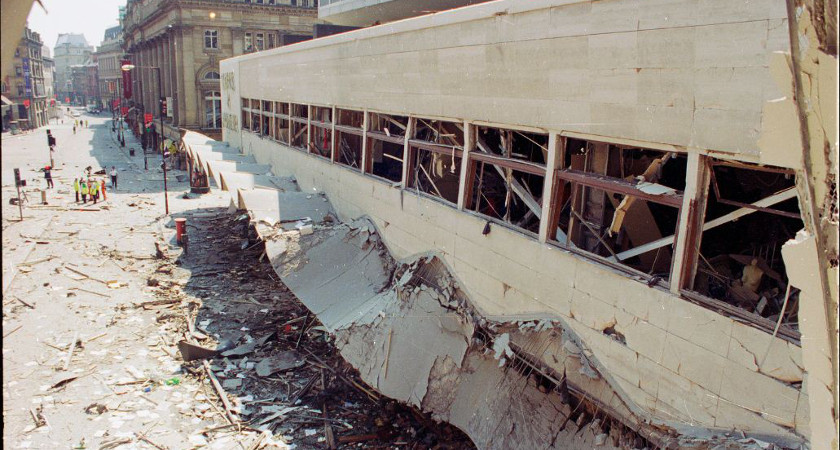 In searching through the wreckage of shops, such as Marks and Spencer, emergency services mistook mannequins for bodies (Manchester Fire Service/Flickr)
In searching through the wreckage of shops, such as Marks and Spencer, emergency services mistook mannequins for bodies (Manchester Fire Service/Flickr)5. A security guard died in 2015 after being exposed to asbestos during the cleanup operation
Stuart Packard worked for three weeks in the devastated city centre as a security guard. Last year, an inquest heard that he died from a cancer caused by asbestos he was exposed to nearly 20 years ago. Mr Packard was a father of two and was 40 when he passed away. He is the only person to have died as a result of the Manchester bombing.
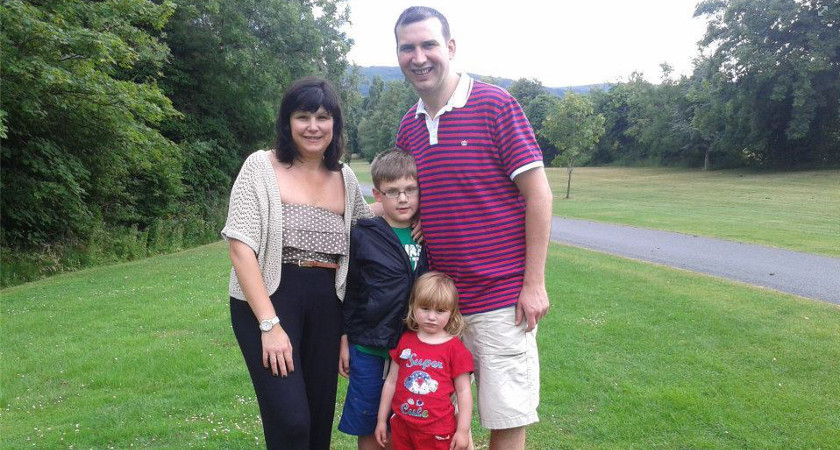 Stuart Packard was just 40 when he died from a cancer caused by exposure to asbestos last year (Picture: Facebook)
Stuart Packard was just 40 when he died from a cancer caused by exposure to asbestos last year (Picture: Facebook)6. The bomb caused over £1.2 billion worth of damage
The destruction ripped through the city centre affecting a third of its retail space. Marks & Spencer, the tunnel to the Arndale and the neighbouring Longridge House were completely destroyed. According to Home Office statistics, an estimated 400 businesses within half a mile (0.8 km) of the blast were affected, 40 per cent of which did not recover. Insurers have since paid out over £700 million in compensation since the incident.
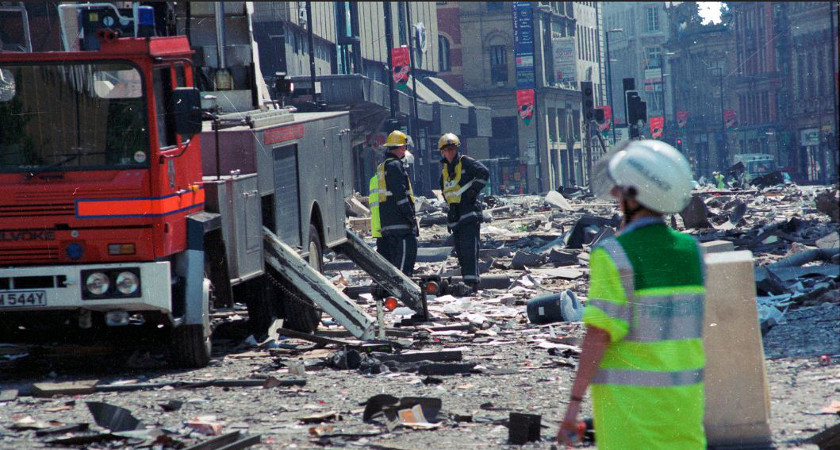 The destruction caused over £1.2 billion worth of damage as of 2016 (Manchester Fire Service/Flickr)
The destruction caused over £1.2 billion worth of damage as of 2016 (Manchester Fire Service/Flickr)7. The explosion took place while England was hosting the Euro 1996 tournament
It is believed that bombers chose Manchester because the city was one of the hosts of the 1996 European Football Championship. Germany and Russia were due to play at Old Trafford the following day. The match still went ahead and Germany beat Russia 3-0, watched by a crowd of over 50,000 people.
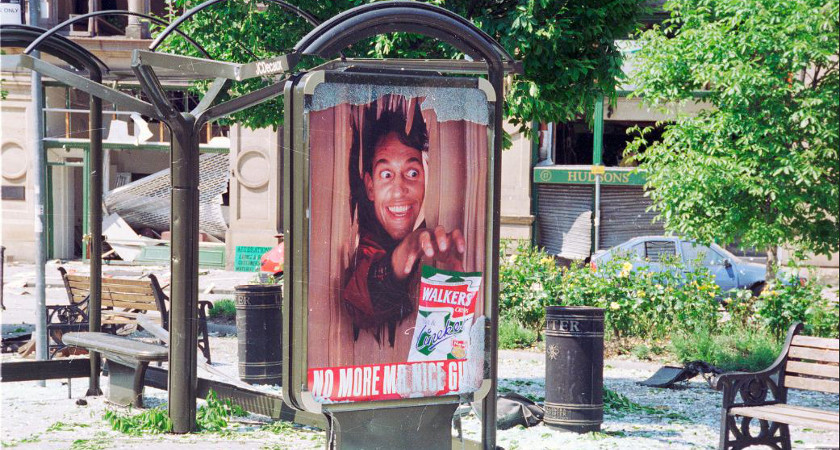 Destruction at a bus stop with an advertisement for Walkers crisps (Manchester Fire Service/Flickr)
Destruction at a bus stop with an advertisement for Walkers crisps (Manchester Fire Service/Flickr)8. No one has been successfully prosecuted for the bombings
Five days after the blast, the IRA released a statement claiming responsibility but said it "sincerely regretted" causing injury to civilians. The two men seen leaving the truck have still not been found and in 2006, Greater Manchester Police admitted there was no realistic chance of prosecuting those responsible. However, this year police have launched a fresh review of the evidence in the hope that they will be able to glean some more information about what happened that day.
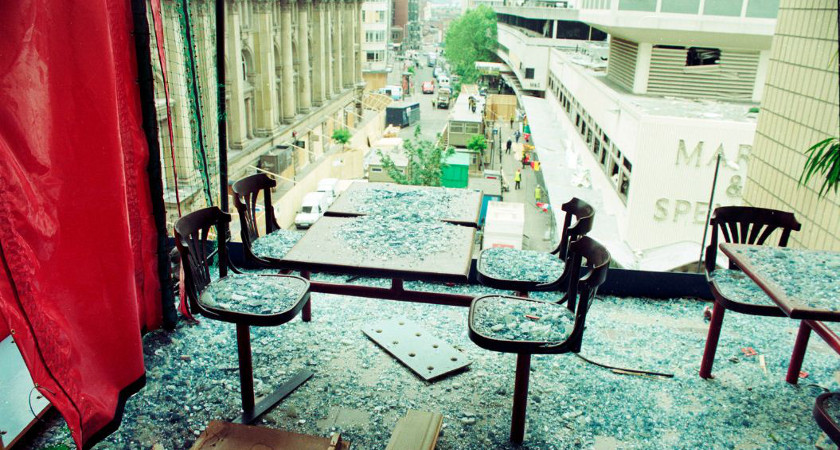 Many of those injured suffered wounds from broken glass (Manchester Fire Service/Flickr)
Many of those injured suffered wounds from broken glass (Manchester Fire Service/Flickr)9. Survivors of the bombings are calling for compensation
After plans for a special pension for severely injured victims of The Troubles in Northern Ireland were announced in 2014, victims of the Manchester bombing have called upon the British government to grant them eligibility for a similar pension.
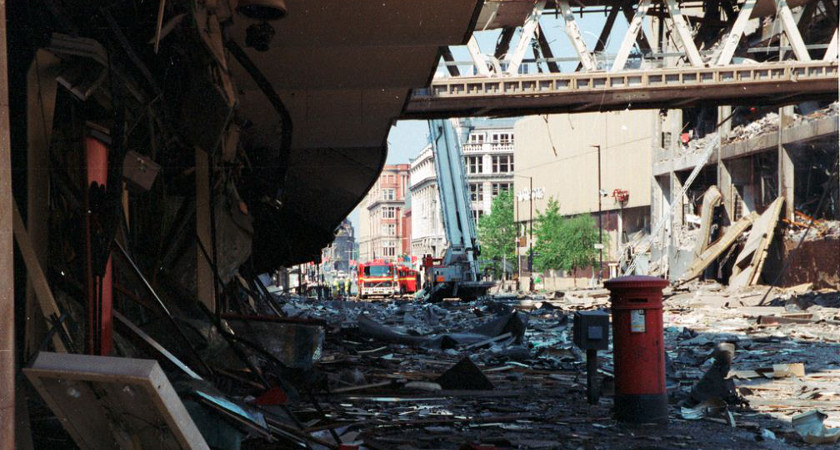 A red post box somehow withstood the blast (Manchester Fire Service/Flickr)
A red post box somehow withstood the blast (Manchester Fire Service/Flickr)10. A red post box survived the blast despite being just yards from the truck
A red post box, which survived the blast, now has a plaque which reads: "This postbox remained standing almost undamaged on June 15, 1996 when this area was devastated by a bomb". The box was removed during the rebuilding of the city centre and was returned to its original site on November 22, 1999.
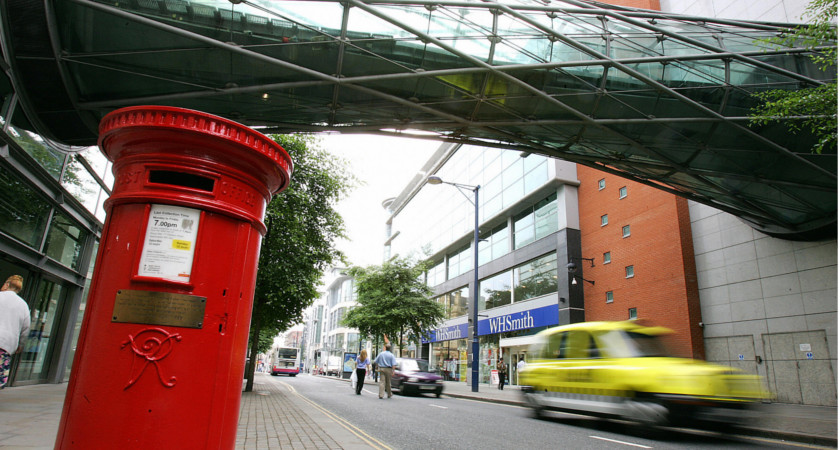 A picture of the same post box in a rebuilt Corporation Street from 2006 (Picture: Getty)
A picture of the same post box in a rebuilt Corporation Street from 2006 (Picture: Getty)
